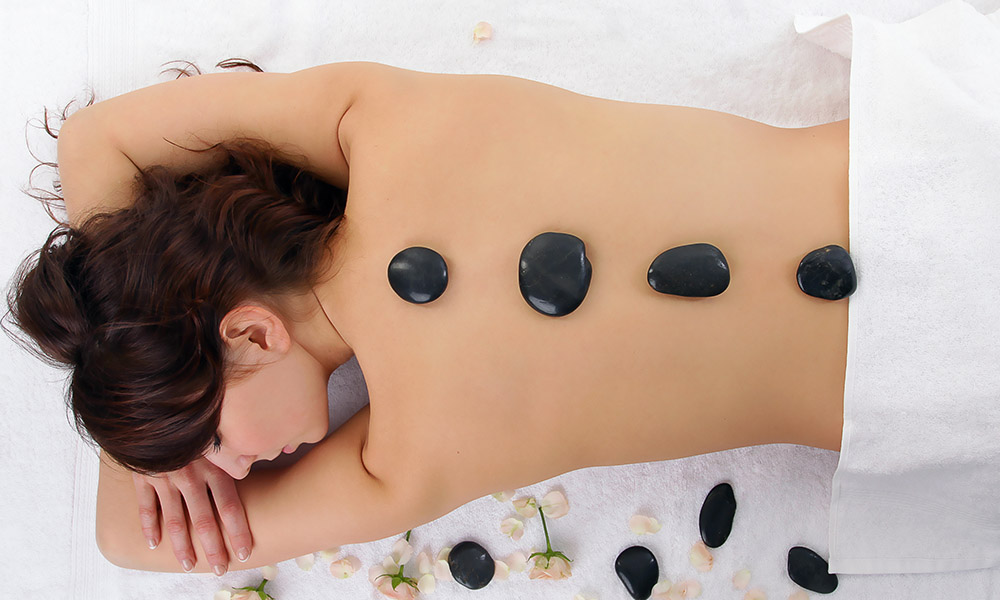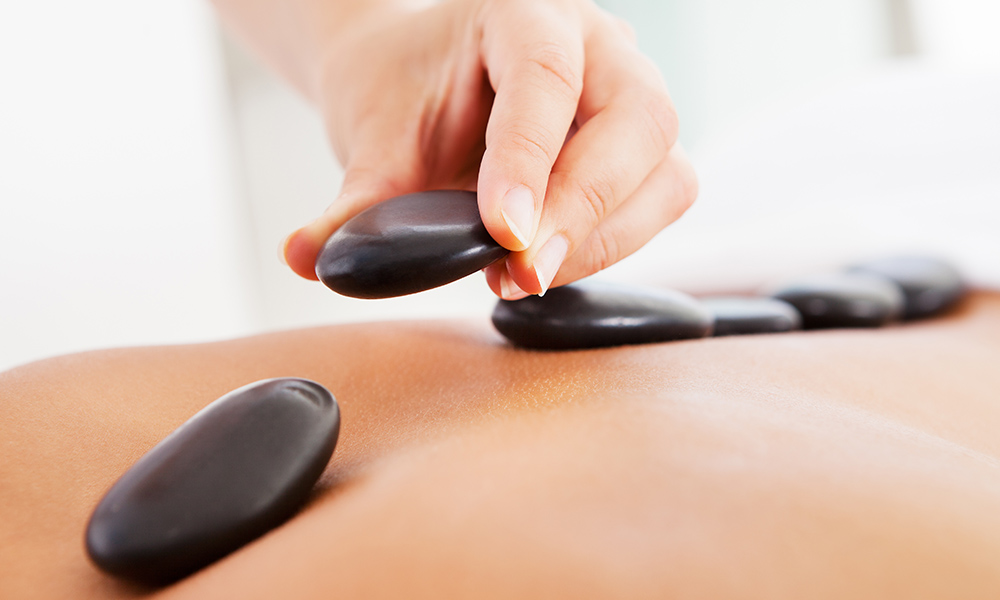When you’re feeling stressed out and overwhelmed, how do you relax? For some people it’s meditation or taking a quiet walk – maybe even spending an hour buried in a good book. These activities can certainly calm your mind, but what about your body? We carry a lot of tension in our muscles and psychological stress can often lead to physical pain. One of the best ways to relax and unwind is to get a massage, but not just any massage – a hot stone massage.
Hot stone therapy has been used for thousands of years. It is a practice that involves heating smooth stones and placing them on various parts of the body during massage to relieve tension.
If you are looking for a new service to add to your spa menu, hot stone therapy doesn’t require any special equipment other than the stones themselves. Your massage therapists may even already have some training in using them. Read on to learn everything you need to know about hot stone therapy and the benefits of incorporating it into your spa treatments.
The History of Hot Stone Therapy
The earliest use of hot stone therapy dates to India about 5,000 years ago. This Ayurvedic practice involved placing hot stones on the body to relieve pain and tension. Some 3,000 years later, the ancient Chinese developed a practice that involved burning mugwort and using shaped stones called Bian to treat disease. They were also known to place stones on the abdomen to improve digestion.
In more contemporary history, the natives of the Sandwich islands (known as Hawaii today) found that they could relieve pain by wrapping heated lava rocks in leaves and applying them to the body. The practice eventually found its way to the Americas where Native Americans used heated stones in sweat lodges. Though the stones were not applied directly to the body, the heat they produced was found to ease muscle tension and support whole-body relaxation.
Today, hot stone therapy is used to address a variety of needs. The stones are typically heated in hot water and applied directly to the body, replaced throughout the treatment as they cool. Some treatments may even involve alternating heated and chilled stones to increase circulation in targeted areas. Hot stone massage involves coating the stones in oil and using them to administer massage.
What Are the Benefits?
Modern hot stone therapy typically involves the use of basalt stones. Basalt is a type of volcanic rock that retains heat very well – the stones are typically heated between 130- and 145-degrees Fahrenheit. Once heated, the stones are placed on specific areas of the body including along the spine, on the stomach and chest, even the face, palms, and feet. Hot stones can be left in place to ease tension or incorporated into massage using long strokes and circular or kneading movements.
Here are some of the benefits of hot stone therapy:
- It helps relieve muscle tension and ease pain
- It boosts blood flow to the affected area
- It may reduce muscle spasms and increase flexibility
- It helps reduce stress and anxiety, promotes sleep
- It may help relieve symptoms of painful autoimmune conditions
- It may provide relief from cancer symptoms like pain, fatigue, and nausea
- It may stimulate the immune system to increase immunity
As a spa owner, you have to view different therapies from two angles. First, you must think about the benefit these treatments provide your clients but, second, you have to think about how they benefit your business. Hot stone therapy is an incredibly popular trend right now and simply to incorporate into your treatment menu. Not only can you offer it as a stand-alone service, but you can list it as an add-on or upgrade for other treatments on your menu to boost revenue.
Tips for Incorporating Hot Stones into Treatment

Hot stone therapy is an ancient practice with its origins deep in Indian Ayurveda. To create an authentic experience for your clients, consider incorporating other traditional Ayurvedic practices. Some therapists use the gemstones traditionally associated with each of the seven chakras. For example, garnet is traditionally used at the base of the spine to give vitality to the body and lapis for the middle of the forehead or the “third eye.”
Here is the typical progression of a hot stone massage:
- The therapist will heat around 50 stones of various sizes to between 130- and 145-degrees Fahrenheit in a specially designed water heater before the client walks into the treatment room.
- Eight large, flat stones should be arranged in pairs on the massage table to align with the client’s spine – a cloth or towel will be placed over the stones before the client lies down.
- Once the client is lying down, the therapist will massage the face with oil and place a small stone on each cheek, under the lip, and on the forehead to mark the “third eye.”
- The therapist will massage the legs using a suitably sized stone, rubbing it along each side of the leg with the desired amount of pressure.
- When finished, the therapist will place a small stone between each of the toes.
- The therapist will massage the arms using medium stones and finish by placing a warm stone in each palm.
- Once the arms and legs are finished, the stones will be removed, and the client will turn over – the eight spinal stones will be removed at this time as well.
- The therapist will massage the back using long strokes with a hot stone then place a stone on each shoulder, one on each scapular area, and one on the lower back – they may place another stone in each palm as well.
- With the back finished, the therapist will place hot stones under the buttocks, on the backs of the knees, and on the calves to relieve any remaining tension in the legs.
- The massage therapist will finish by massaging the neck, shoulders, and scalp before removing all the stones.
There are many ways to incorporate hot stones into your spa treatment menu, so don’t be afraid to get creative and research further to find the best version for your spa. If you’re going to offer hot stone therapy, be sure to include a traditional hot stone massage on your treatment menu but you may also consider offering it as an add-on to other massage and facial services.

